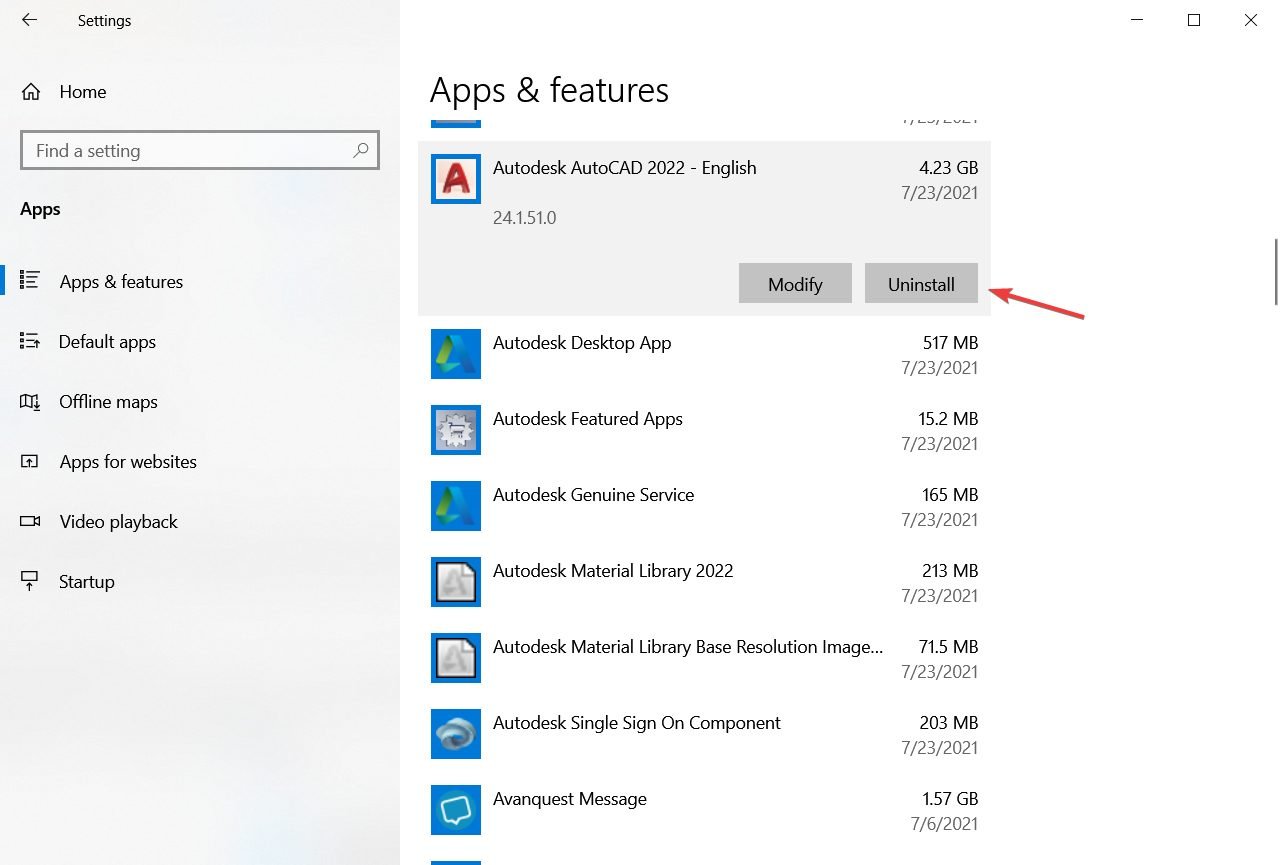
- #Autocad 2005 windows 10 registry key for free#
- #Autocad 2005 windows 10 registry key how to#
- #Autocad 2005 windows 10 registry key update#
- #Autocad 2005 windows 10 registry key software#
- #Autocad 2005 windows 10 registry key code#
+ (Get-ItemProperty -Path HKCU:\Software\ScriptingGuys\Scripts -Name version).vers … Get-ItemProperty : Property version does not exist at path HKEY_CURRENT_USER\Software\ScriptingGuys\Scripts. If the registry key property does not exist, the error message is very specific. I could use Get-ItemProperty to verify if a registry key property value exists. Or, I can use the Get-ItemProperty cmdlet. I can use the Registry Editor to verify that my registry key property value exists with the proper value:
#Autocad 2005 windows 10 registry key code#
As shown here, this code appears in the ELSE condition of the statement: If the registry key already exists, there is no need to attempt to create it again, so I create the registry key property value. New-Item -Path $registryPath -Force | Out-Null
#Autocad 2005 windows 10 registry key update#
PS C:\> Test-Path HKCU:\Software\ScriptingGuys\scripts\version -PathType AnyĪfter I verify that the registry key exists, I use the New-ItemProperty cmdlet to create or update my registry key property value: PS C:\> Test-Path HKCU:\Software\ScriptingGuys\scripts\version -PathType Leaf PS C:\> (Get-ItemProperty -Path HKCU:\Software\ScriptingGuys\Scripts -Name version).version PS C:\> Test-Path HKCU:\Software\ScriptingGuys\scripts\version

PS C:\> Test-Path HKCU:\Software\ScriptingGuys\scripts It will attempt to work, but it does not.
#Autocad 2005 windows 10 registry key how to#
The reason, is that Test-Path does not know how to work with registry key property values. After all, that is what the script is all about in the first place. You may wonder why I cannot use Test-Path to verify that the registry key property does not exist. I need to put the Test-Path statement in a pair of parentheses so that I am "NOTing" the condition. I use the explanation point ( ! ) as the not operator. To do this, I use the If statement, and I look for the registry key that is NOT existing. Now I can use the Test-Path cmdlet to see if the registry key exists. This consists of three variables as shown here: The first thing I like to do is to create the path to the registry key, then specify the property name and the value I want to assign. If the registry key does not exist, then you need to create the registry key, and then create the registry key property value. You need to test for the existence of the registry key. New-ItemProperty -Path $registryPath -Name $name -Value $value `Īnd here is the error message that appears when the registry key does not exist: $registryPath = "HKCU:\Software\ScriptingGuys\Scripts" When the registry key property exists, your script works. In your script, you are using the New-ItemProperty cmdlet to attempt to update a registry key property value. Microsoft Scripting Guy, Ed Wilson, is here. Is there something I am not doing? I am including my script so you can see what is going on. The error message says that it cannot find the path because it does not exist. I added the –Force parameter, but it still will not create the registry key. I am using the New-ItemProperty cmdlet, but it fails if the registry key does not exist.

Hey, Scripting Guy! I am having a problem trying to update the registry.

#Autocad 2005 windows 10 registry key software#
It is professional desktop software to create precise 2D and 3D drawings, an ideal program for architects, engineers, and construction.
#Autocad 2005 windows 10 registry key for free#
If you want to Activate your AutoCAD 2020 for free you are at right place! Here you will able to solve following queries of yours:Īutocad 2020 including specialized toolsetsĪutocad 2020 is not found on this computer


 0 kommentar(er)
0 kommentar(er)
